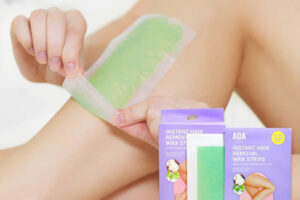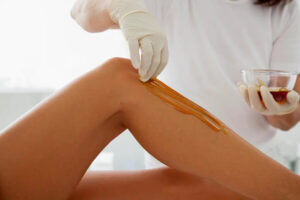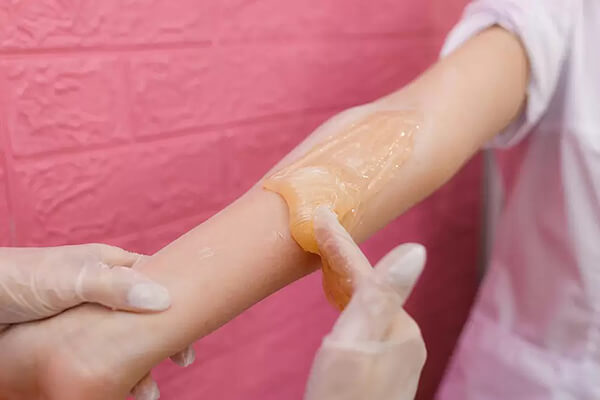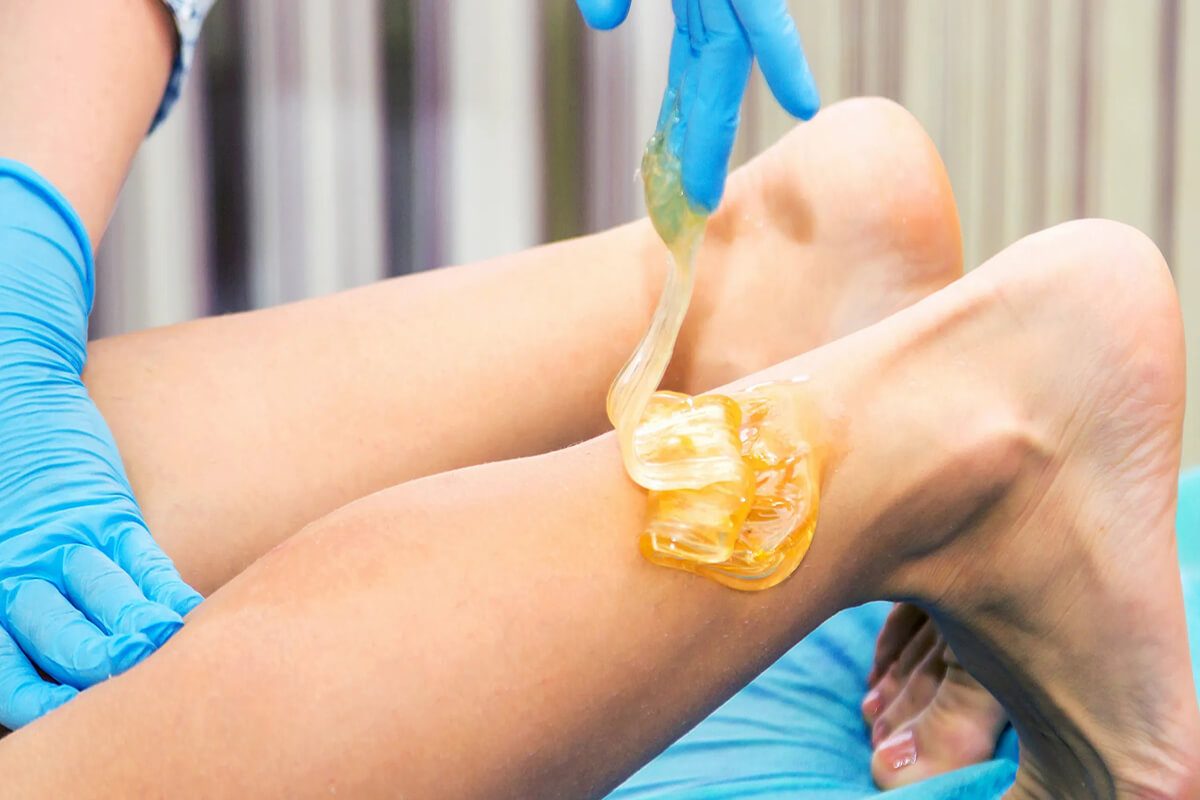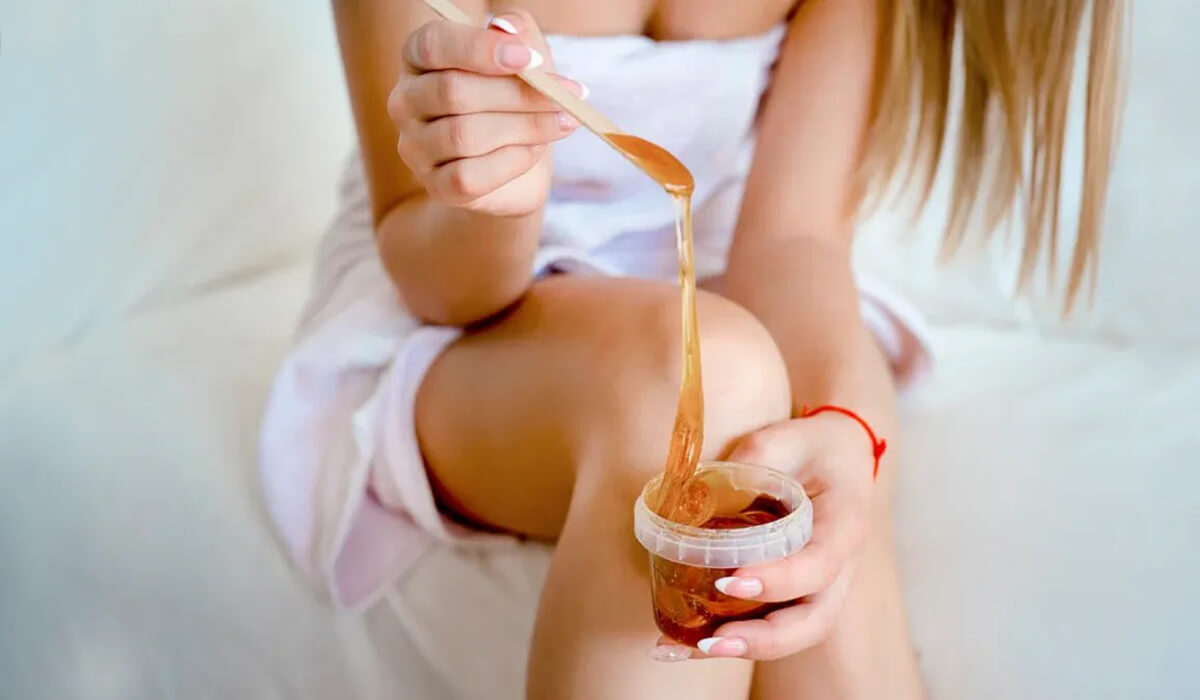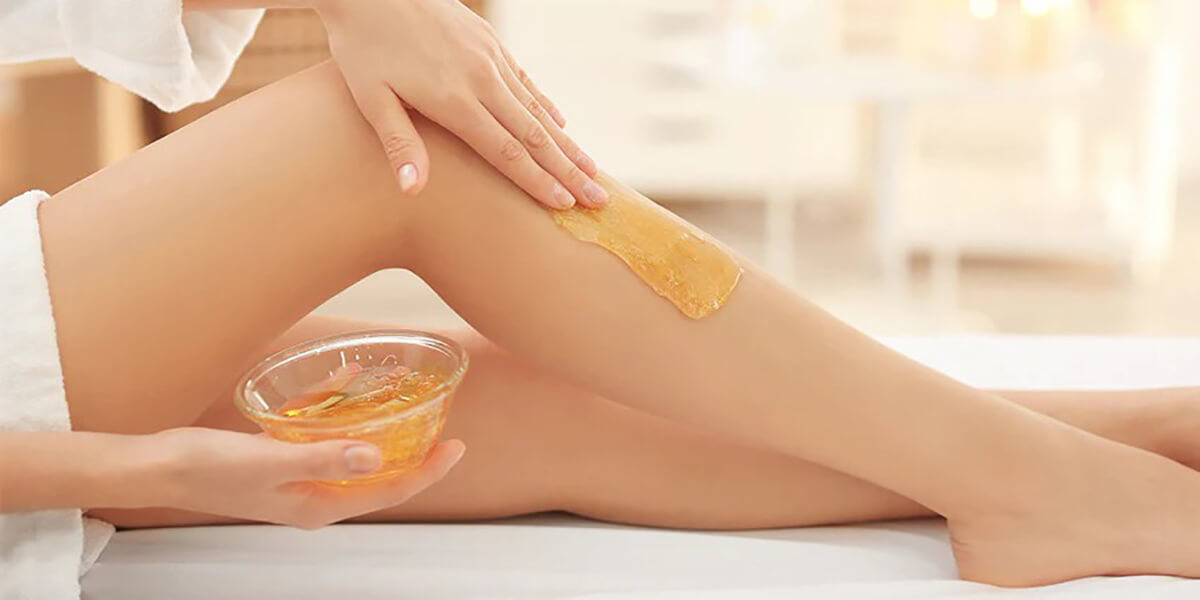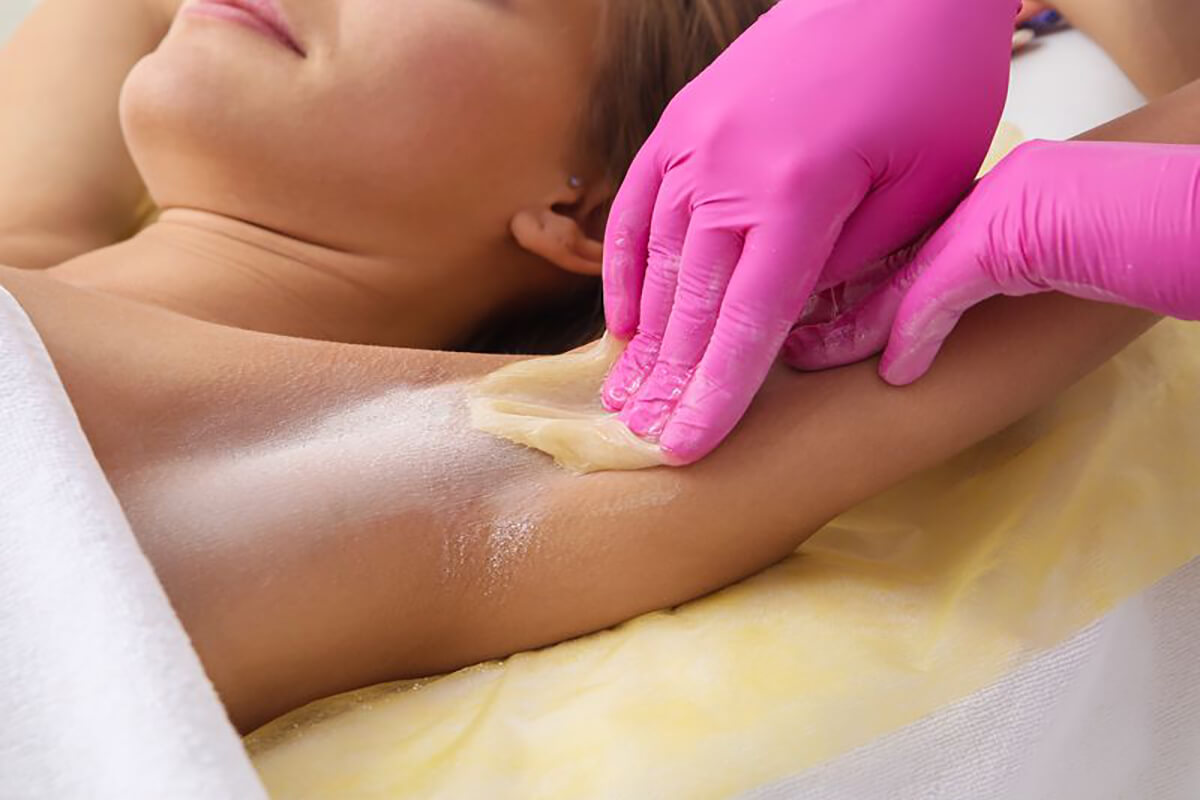Long before waxing, and before laser hair removal, people who wanted to get rid of body hair relied on a process we now call “sugaring.” Experts trace this hair removal treatment back to ancient Persia, and apparently even Cleopatra was a fan.
While waxing and hair removal creams are still popular in the modern era, sugaring is definitely making a comeback. Not only can you find salons that specialize in sugar hair removal, but there are even brands that offer sugar hair removal at home. It’s often confused with waxing, but they’re not the same – there’s no wax here (it actually involves sugar!). To learn more about how it works, what it feels like, and what to expect before trying it for yourself, we took an expert deep dive into the sugaring process to help you decide if this is the right hair removal routine for you.
1. What is sugar hair removal?
The process of sugaring is very similar to that of waxing, but there are some key differences as well.
First, an all-natural, sugary paste is applied to your skin instead of hot, molten resin. Additionally, wax is applied in the direction of hair growth, while sugar paste is applied against the direction of hair growth. Lozina says this makes hair removal less invasive and more comfortable. And since the paste is room temperature, it also eliminates any possibility of burns.
“The effects of sugaring last for about four weeks, [which is similar to] most hair removal treatments,” says Lozina. “Over time, you can expect hair growth to slow down and treatments to become less frequent.” In addition to being effective at removing body hair, sugaring has some notable benefits:
- Natural: Sugar paste is usually made from sugar, water, and lemon juice.
- Eco-Friendly: This paste can be reused multiple times (on the same body) instead of being a one-time use like wax.
- Exfoliation: Lemon juice and the exfoliation process help gently exfoliate the skin.
- Less Pain: Any time you remove body hair, it hurts, but people say sugaring is less painful than waxing.
- Easy cleanup: “It’s easy to clean up added sugar because it’s sugar, which melts in water.” notes Lozina.
1) How does added sugar work?
The magic of adding sugar is in the past. Boil the sugar, lemon juice, and water together until everything is combined (no sugar remains). “While it has cooled to a thick paste, use a wooden spatula to cleanse and dry the skin in the direction of hair growth,” explains Mariana Blooming-Karasik, MD, board-certified, fellow of the American Academy of Dermatology road.
Dermatologist specializing in cosmetic, medical, and surgical dermatology and co-founder of Precision Skin Institute in Davie, Florida. “By gently pressing the paste into the skin, the hair will be trapped.” The paste and any unwanted hair will be removed when pulled quickly in the opposite direction of hair growth.
2) How long does adding sugar last?
Sugaring is a method of temporary hair removal, which means you have to do it regularly to keep your skin smooth. Dr. Blyumin-Karasik notes that results typically last two to four weeks, but this may depend on an individual’s hair growth cycle, the area of the body where hair treatment is performed, and hormonal and genetic influences.
3) What to expect during the first meeting
Before getting their first sugar treatment, Craghorn advises clients to let their hair grow to at least a quarter-inch long and avoid exfoliating for 48 hours after the treatment. “We also recommend clients avoid caffeine before their appointment and maintain clean skin without any lotions or oils.”
She adds that avoiding caffeine and nicotine can help reduce pain. “The body can become more receptive to pain signals if stimulants are added before sugar since they can increase water retention, causing the skin to become more inflamed after adding sugar,” says Craghorn. “It’s best when you arrive. Stay as calm as possible so the sugaring process goes as smoothly as possible.”
2. Advantages and Disadvantages of Added Sugar
Dermatologists and consumers favor added sugar for several reasons. According to Dr. Ilyas and Dr. Blyumin-Karasik, added sugar is:
- Great value for money. The price usually depends on your location, the type of salon or spa you go to, and where the sugaring is done, but it’s usually cheaper than waxing and much cheaper than laser.
- More natural. Sugarpaste is made from just water, lemon juice, and sugar, making it a more natural hair removal option than hard wax or shaving cream.
- It’s less damaging to the skin and less painful than waxing.
- Moisturizes skin. “This skin care product hydrates and exfoliates, leaving skin feeling smooth and soft,” says Dr. Blyumin-Karaisk.
- This is a longer-lasting option compared to shaving.
Adding sugar may be a good option, but there can be risks with any hair removal technique. The following are some of its disadvantages:
- Added sugar can still cause skin irritation. Dr. Blyumin-Karasik notes that while it may not be as irritating to the skin as waxing, adding sugar is not without risks. “It can also occasionally cause skin irritation and skin allergies,” she says.
- Trying it at home may not be as successful as doing it with a professional. Shaving can be done easily at home, and there are even waxing kits for home use. While adding sugar may seem like a do-it-yourself (DIY) option, Dr. Blyumin-Karasik warns against jumping into the idea. “The preparation of sugar paste requires technique (special pots and long-simmering processes) and professional application,” she says. “Make sure you visit your local spa/salon professional who is trained to use added sugar appropriately.”
3. How to perform sugar hair removal at home
You can have sugar hair removal performed by professional sugar technicians at spas and designated sugaring locations. However, just as brands have developed waxing kits and hair removal creams for personal use, sugar hair removal can also be done at home.
1) Step one: Collect supplies
Lozina says you’ll need gloves, baby powder, and a sugaring tool. You’ll also need some soap for post-sugar cleanup, and a moisturizer for aftercare.
2) Step Two: Prep Your Skin
Clean skin with soap and warm water and pat dry. Wait about 10 minutes until the skin is completely dry before proceeding to step three.
3) Step 3: Apply baby powder
Apply a small amount of baby powder to clean, dry skin. Just a small amount is enough. This step helps absorb excess moisture so the sugar paste can work its magic.
4) Step 4: Soften the sugar paste
“Put on your gloves and grab a big golf ball-sized wad of candy,” Lozina said. “Use one hand and start working the sugar mass with your fingers, moving the mass until it becomes opaque. This will heat the sugar and make it glide easier on the skin.”
5) Step 5: Apply sugarpaste
Once the sugar becomes pliable, apply it to your hair. Note that this is different from traditional resin wax, which is applied in the direction of hair growth.
6) Step 6: Quickly remove sugar paste
“Really press the sugar into the skin and then, using a whip-like motion, remove it in the opposite direction,” says Lozina. It might take you a few tries to get the moves down, but with practice, you’ll become a pro. You can continue working on the same area without feeling irritation.
7) Step 7: Repeat
Repeat application and removal until all hair is gone.
8) Step 8: Take care of your skin afterwards
Use soap and water to remove any remaining sugar paste. Luckily, it dissolves easily because it’s all-natural. Unlike resin wax, you don’t have to worry about it clogging your drains! Afterward, apply a moisturizing body lotion or oil to keep your skin soft.
4. Tips for caring for your skin after adding sugar
Sugar wax hair removal not only removes hair but also exfoliates the skin, which means the area where sugar is applied will become very rough and sensitive after treatment. You can help your skin heal by following these tips.
1) Use mild, natural cleansers and moisturizers
You’ll need to take care of your skin for a few days after treatment, so avoid using any harsh products and slather on a moisturizer to help protect your skin.
2) Cool showers and bathtubs
Not only can hot showers be uncomfortable on newly sugared skin, but they can also dehydrate the area.
3) Don’t exfoliate or shave for at least two days
The sugar treatment is already an exfoliating treatment (hopefully they got every hair out during the treatment!), so give your skin a break to heal. Afterward, you’ll want to use a gentle exfoliant to reduce the chances of ingrown hairs.
4) Avoid wearing tight clothes
Newly sugared skin can be a little sensitive, so avoid wearing anything that will rub against the sugared area.
5) Apply a thick layer of sunscreen
Honestly, you should always wear sunscreen, but you need to be extra careful in the days after a sugar treatment.
6) Delete some activities
Avoid swimming pools, hot tubs, and beaches because your skin is more susceptible to the bacteria that lurk there. And keep it light, as sweating can actually cause clogged pores, leading to ingrown hairs.
5. Frequently asked questions
Here are answers to frequently asked questions about sugar hair removal.
1) Can you put sugar in your hair if it is too long or too short?
You need enough hair for the sugar paste to grab onto, but not too much. It’s time to add sugar when your hair is between 1/4 inch and 3/4 inch long.
2) What sugar wax is best to use?
Sugar wax comes in many forms, from roll-on wax to hard wax, so it may take some experimenting to find the right wax for you.
3) In which parts of the body can sugar be added?
Dr. Ilias says it’s safe to add sugar anywhere in the body. “Due to its cost-effectiveness, safety, and reduced irritation, it is generally more suitable for large surface areas.”
4) How to make sugar paste at home?
To make the roux at home, combine 1/4 cup lemon juice, 2 cups sugar, and 1/4 cup water in a saucepan, bring to a boil, and cook until golden brown. Before using, allow to cool for 30 minutes.
5) Where can I get sugar treatments?
You’ll find that many hair removal salons and health spas offer sugaring services, some of which specialize in sugaring services.
6) How long does the effect of added sugar last?
“After one session, the hair is temporarily removed, and the results usually last three to five weeks,” says Palep. If you want to stick to a regular sugaring schedule, allowing for an extra week or so of extra growth (because you’ll need some stubble to stick to the sugaring), then make monthly appointments, or extend the time up to six weeks if you’re lucky.
The tiny hairs themselves will usually start to grow back after two weeks, and a session can last 30 to 45 minutes, depending on the area of your body you’re sugaring.
7) How much does it cost to add sugar?
For example, in New York City salons, sugar for the bikini area sells for an average of $39, while costing just $9 for the lips, chin, or abdominal area. But remember, the results are not permanent, so you will need to make regular appointments in order to maintain your hairless look. Therefore, some beauticians and sugar spas also offer package and monthly membership options.
8) Are there any risks?
The syrup is heated before use, “and if the mixture is too hot, you can get burned,” Henry explains. “The importance of having it done by a trained esthetician cannot be overstated.” Furthermore, it’s recommended that you avoid sweets altogether if you’re using retinol on your skin, taking steroids, or taking isotretinoin. ” If you have bruising, swelling, rashes, open sores, sunburn, or cold sores, avoid added sugar,” she says. “Ingrown hairs, folliculitis, irritation, burns, and rashes are possible side effects.”
6. Conclusion
The above is the definition, advantages, and disadvantages, and answers to frequently asked questions about sugar hair removal. If you would like to know more about hair removal, please contact Auperwel.
How useful was this post?
Click on a star to rate it!
Average rating 0 / 5. Vote count: 0
No votes so far! Be the first to rate this post.



